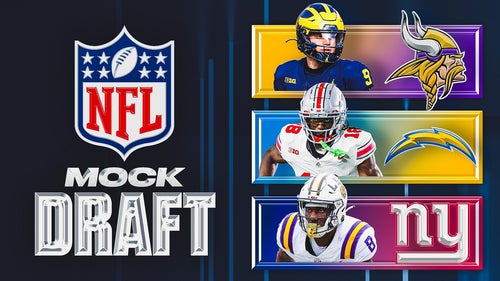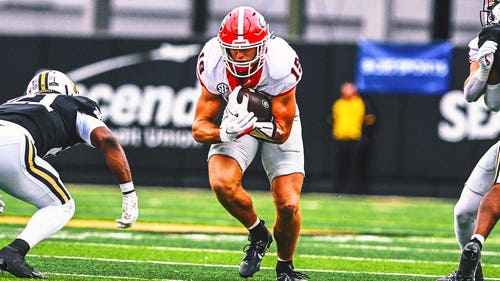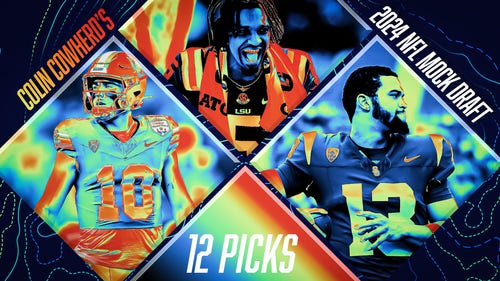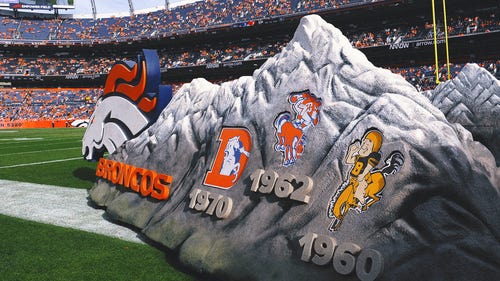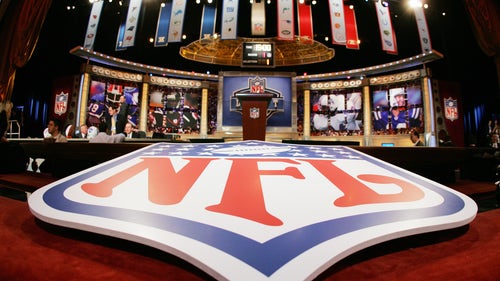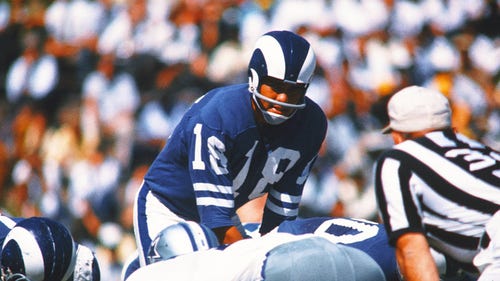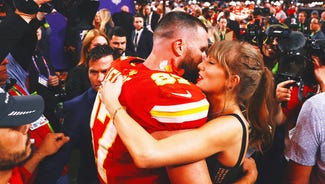
The real definition of indisputable
My buddy Webster defines the word indisputable as "not disputable or deniable; uncontestable. As in: indisputable evidence."
That’s why I love the word "stands" when it comes to the NFL and replay. It means the play is so close that the referee feels that there is not enough indisputable visual evidence to overturn the call. When that happens, I’ve always felt that replay has done its job.
Let’s examine two plays that took place Sunday during Week 11 in the NFL — one where I felt the officiating crew made the right decision in the Dallas-Washington game, and one in the Cincinnati-Baltimore game where I felt they didn’t.
In the Cowboys-Redskins game, here was the situation: Washington had the ball, third-and-6 from the Redskins’ 24-yard line with 8:39 left in the first quarter. There was no score. On the play, Washington quarterback Rex Grossman completed a 5-yard pass to Fred Davis, who fumbled the ball and it was recovered by Dallas’ Gerald Sensabaugh. The Redskins challenged the runner-was-down-by-contact ruling, and the play was upheld.
I think referee Ed Hochuli did exactly what he should have done, which was to stay with the original call that was made. In this case, the ball hit the leg of the defender and started to come loose at exactly the same time that Davis’ knee hit the ground.
With the challenge, Hochuli had a chance to take a second look at it and he decided that there was not enough evidence to reverse the call. And I’m good with that 99 percent of the time.
In the Cincinnati-Baltimore game, a call that was made on the field was reversed — and it was a touchdown that was scored by the Bengals.
Here was the situation: Cincinnati had the ball, third-and-2 from the Baltimore 9-yard line with 5:35 left in the fourth quarter. Baltimore led 31-21. On the play, Bengals quarterback Andy Dalton completed a 9-yard pass to Jermaine Gresham for a touchdown. The replay assistant initiated a review on the completed pass ruling, and the play was reversed.
As much as I love the word "stands," I don’t like the word "reversed," especially when there would not appear to be enough evidence to overturn the call. I think that was the case on this play.
Gresham was going to the ground to complete the catch, but he had complete control of the ball in his right hand before the ball hit the ground. I do agree that the ball moves slightly when it hits the ground, but in this case Gresham kept his right hand on the ball the entire time.
The ball will always move, which is why referees are told never to use that terminology. You either maintain possession or you lose possession, which means your hands come off the ball.
In the end, it’s all about judgment. But you need absolutely indisputable evidence to overturn a ruling on the field.
Indisputable. There’s that word again. If there’s ever a doubt, my friend Webster will clear everything up.
Let’s take a look at some of the other interesting plays from Sunday:
THE GAME: Arizona at San Francisco
THE SITUATION: San Francisco had the ball, first-and-7 from the Arizona 7-yard line with 14 seconds to go in the third quarter. San Francisco had the lead 23-0.
THE PLAY: San Francisco quarterback Alex Smith attempted a pass to Delanie Walker that appeared to be a backward pass when Smith was hit by the Cardinals’ Daryl Washington. Arizona challenged the incomplete pass ruling, and the play was upheld.
MY TAKE: This was a forward pass. It did not take referee Pete Morelli long to confirm the ruling.
Let’s look at the rule. Rule 8, Section 1, Article 1 states: "If the passer is attempting to throw a forward pass (which Smith was), but contact by an opponent materially affects him, causing the ball to go backward, it is a forward pass, regardless of where the ball strikes the ground, a player, an official, or anything else.’’
Smith was attempting to lead Walker up field to complete a pass, but the contact by Washington caused the ball to go backward out of Smith’s hand. Since Smith was attempting to throw a forward pass, it automatically became an incomplete pass when the ball hit the ground.
THE GAME: Oakland at Minnesota
THE SITUATION: Minnesota had the ball, second-and-8 at the Oakland 33-yard line with 5:39 left in the first quarter. There was no score.
THE PLAY: Minnesota quarterback Christian Ponder's pass attempt to Greg Camarillo was incomplete. Instead of the play being third-and 8, the sideline marker showed it to be fourth down. Minnesota called timeout and after the referees huddled, the down was returned to third down. The Vikings were given their timeout back.
MY TAKE: This is a mess that should have never happened. There was a holding penalty called on the first-down play, which brought back a long run. The spot of the foul was 18 yards downfield and when the penalty was enforced from the spot of the foul, it left the ball short two yards of the line to gain and first down was to be repeated.
The announcement on the field was correct, but the person who operates the down marker on the sideline put second down on the marker. That led to confusion and the officials then went with what was indicated on the down marker and essentially lost a down.
Minnesota had to call a timeout to get this straightened out and eventually the officials finally determined the error.
You can’t blame the guy who operates the down marker — it’s the officials’ responsibility to check to make sure the proper down is listed on the marker. The officiating crew is lucky that the Vikings called a timeout before the punt — if that error had not been corrected, it’s the type of mistake that would have led to discipline for the crew.
THE GAME: Tampa Bay at Green Bay
THE SITUATION: Tampa Bay was kicking off with 3:52 left in the second quarter. Green Bay led 14-10.
THE PLAY: Bucs kicker Michael Koenen attempted an onside kick that went eight yards to the Tampa Bay 43-yard line and was recovered Tampa Bay’s Larry Asante. The ruling on the field was that Green Bay’s D.J. Smith touched the ball first before Asante recovered it. Green Bay challenged the loose ball recovery ruling, and the play was reversed.
MY TAKE: Good luck on this play. Sometimes what happens on the field gets so complicated that it takes five minutes to sort out. When attempting an onside kick, the kickers cannot be the first to touch the ball until it goes 10 yards.
The officials on the field eventually ruled that Green Bay was the first to touch the ball and therefore awarded the ball to Tampa Bay, which eventually recovered the ball.
The Packers then challenged and the ruling was reversed, indicating that Tampa Bay touched the ball first. That “touch” then became an illegal touch by the kicking team, since the ball had not gone the required 10 yards.
The ball was eventually placed at the 38-yard line, which is five yards beyond where it was touched. The assumption is that the officials added the five yards for the illegal touch onto the end of the play.
The referee never announced that a penalty was enforced, but that’s where the ball ended up.
THE GAME: Buffalo at Miami
THE SITUATION: Buffalo had the ball, third-and-18 from the Miami 18-yard line with 4:41 left in the third quarter. Miami led 35-6.
THE PLAY: Buffalo quarterback Ryan Fitzpatrick took the ball back to pass, then fumbled. But he caught his own fumble and then completed a 4-yard pass to Fred Jackson.
MY TAKE: You think you’ve seen it all, but then you see something like this and it makes you stop and think.
By rule, you cannot throw two forward passes. Fitzpatrick attempted to throw a pass, but the ball came loose in his hand before the hand started forward. Fitzpatrick then caught what was ruled a fumble and he then attempted a forward pass.
This was a pretty heads-up call by referee Walt Coleman. You’ve got a fumble and a pass, but not two passes.
THE GAME: Cincinnati at Baltimore
THE SITUATION: Baltimore had the ball, third-and-10 at the Baltimore 31-yard line with 1:40 left in the second quarter. Baltimore led 14-7.
THE PLAY: Ravens quarterback Joe Flacco completed a 28-yard pass to Torrey Smith, who was pulled down by his dreadlocks by Cincinnati’s Adam Jones.
MY TAKE: I saw a lot of horse-collar penalties Sunday, including three in the Detroit-Carolina game. This one looked like it might have been, but Jones grabbed Smith by the dreadlocks and pulled him to the ground.
I know long hair is an expression of your personal freedom, but if I was an offensive player, I’d never wear my hair outside my helmet. All you’re doing is giving a defender another legal way to tackle you. It is not a foul to pull somebody down by his hair.
By the way, there were lots of questions about horse collars Sunday from my Tweeps. A couple of things: First, you do not have to pull the runner all the way to the ground. Second, the horse collar rule does not apply to the quarterback in the pocket or the running back if he is within “close line” play, which is defined as an area from tackle to tackle and three yards on either side of the line of scrimmage.






































































































































